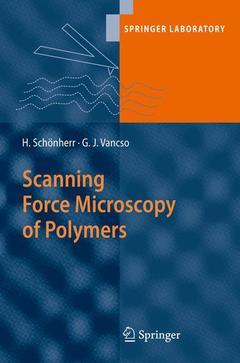Scanning Force Microscopy of Polymers, 2010 Springer Laboratory Series
Auteurs : Vancso G. Julius, Schönherr Holger

A practice oriented book. It "teaches" the reader to pick up knowledge and skills necessary to obtain good and reliable results within the shortest possible time
Didactically clear and easily understandable and contains many graphical representations and visuals
Helps the reader to develop a conscious and critical understanding
Includes supplementary material: sn.pub/extras
Date de parution : 08-2016
Ouvrage de 248 p.
15.5x23.5 cm
Disponible chez l'éditeur (délai d'approvisionnement : 15 jours).
Prix indicatif 118,31 €
Ajouter au panierDate de parution : 05-2010
Ouvrage de 248 p.
15.5x23.5 cm
Disponible chez l'éditeur (délai d'approvisionnement : 15 jours).
Prix indicatif 105,49 €
Ajouter au panierThèmes de Scanning Force Microscopy of Polymers :
Mots-clés :
AFM; Copolymer; Homopolymer; Makromoleküle; Mikroskopie; PET; Polybuten; Polyethylen; Polymer; Polymer Analytik; Polymere; Polypropylen; Xanthan; biopolymers; morphology



